Welcome to our blog, where we delve into maximizing egg production and uncover strategies to boost your chicken farm’s productivity. You’ve come to the right place if you’re a poultry farmer aiming to optimize your egg yields. This article will explore practical techniques backed by accurate data to help you achieve higher egg production rates.
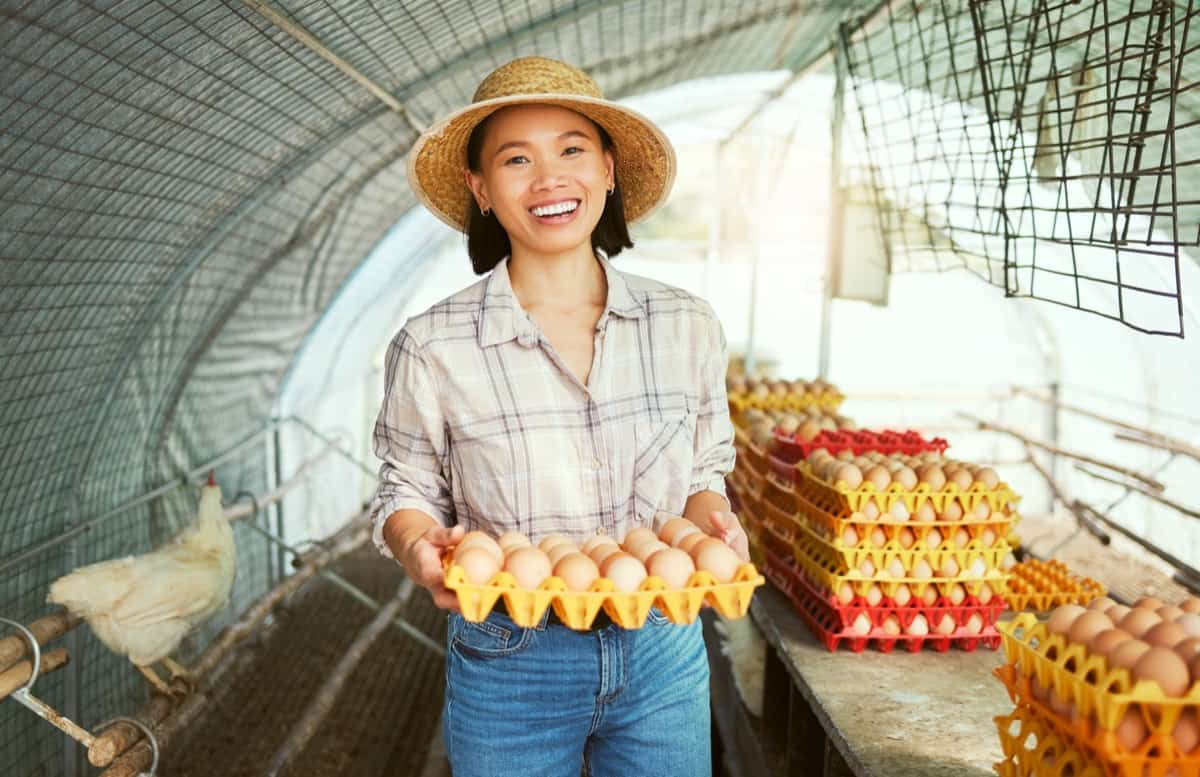
From selecting the right chicken breeds to implementing proper nutrition, lighting techniques, and disease management strategies, we’ll cover all the essential factors contributing to maximizing your farm’s egg output. Get ready to learn valuable insights and actionable tips to advance your egg production.
Strategies for Maximizing Egg Production
Best Chicken Breeds for High Egg Production
- Leghorn: Leghorns are renowned for their prolific egg production, laying around 280-320 large white eggs annually. They are highly efficient layers, making them popular for commercial egg production.
- Rhode Island Red: This breed is known for its brown eggs and impressive productivity, producing around 200-300 large eggs annually. Rhode Island Reds are hardy and adaptable, suitable for backyard flocks and small farms.
- Sussex: Sussex chickens lay approximately 250-300 large brown or white eggs annually. They are docile, making them an excellent choice for backyard chicken enthusiasts who value egg production and friendly temperament.
- Australorp: Australorps lay around 250-300 brown eggs annually. They are known for their exceptional laying capabilities and hold the record for the most eggs laid in a year by a single hen.
- Plymouth Rock: This breed annually lays about 200-280 brown or white eggs. Plymouth Rocks are dual-purpose birds, valued for their egg-laying abilities and meat quality.
- Orpington: Orpington chickens produce approximately 180-200 large eggs annually. They are known for their fluffy feathers, calm nature, and beautiful egg colors, including brown, blue, and green.
| Breed Name | Egg Color | Average Annual Egg Production | Egg Size |
| Leghorn | White | 280-320 | Large |
| Rhode Island Red | Brown | 200-300 | Large |
| Sussex | Brown/White | 250-300 | Large |
| Australorp | Brown | 250-300 | Large |
| Plymouth Rock | Brown/White | 200-280 | Large |
| Orpington | Brown/Blue/Green | 180-200 | Large |
In case you missed it: Maximizing Efficiency: How to Optimize Chicken Farm Operations
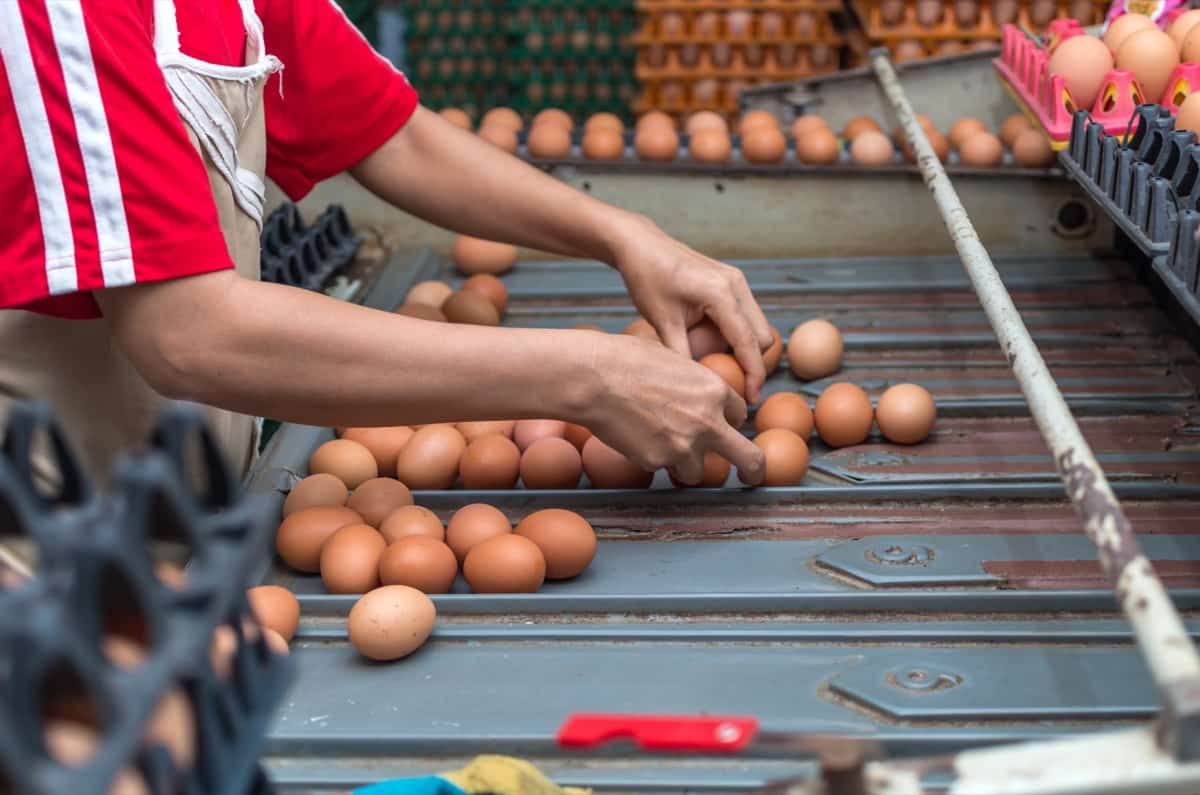
How to Boost Chicken Farm Egg Production To Maximize Profits
Choose the Best Breeds for Maximum Chicken Farm Profit
- Research and select breeds are known for high egg production and disease resistance.
- Find a reputable hatchery with a record of producing healthy and productive chicks.
- Be cautious when dealing with mediators and agencies, ensuring they provide quality chicks from reliable sources.
Optimize Poultry Feed Formula for Profitability
- Invest in a standardized feed formula to ensure proper nutrition for your chickens.
- Consider hiring a professional nutritionist or purchasing a proven chicken feed formula.
- Avoid experimenting with unproven feed formulas, as they can lead to financial losses.
Embrace Proper Medications
- Explore organic alternatives to synthetic drugs for poultry health management.
- Utilize herbs and spices with medicinal properties to prevent and treat diseases.
- Organic medications can save money while keeping chickens healthy and productive.
Minimize Poultry Feed Wastage
- Serve feed in smaller portions throughout the day to reduce wastage.
- Avoid overfilling feeders, which can lead to chickens wasting feed.
- Use well-designed feeders to limit feed waste and promote uniform body weights.
Practice Litter Contact and Management
- Maintain strict biosecurity measures to prevent disease transmission through contaminated litter.
- Keep litter clean and dry to minimize the risk of diseases like coccidiosis and Salmonella.
- Consider implementing acidifiers, synbiotics, and phytogenics to support gut health.
Plan Sales Strategically for Higher Poultry Profit
- Determine the ideal time to sell broilers or spent layers based on market demand and profitability.
- Secure buyers in advance to avoid extended raising periods that may not be cost-effective.
- Replace layers when their egg production declines and the feeding cost outweighs the profit.
In case you missed it: Raising Kadaknath Chickens (Black Chicken) in India: Check How this Guide Helps Profitable Kadaknath Poultry Farming from Scratch
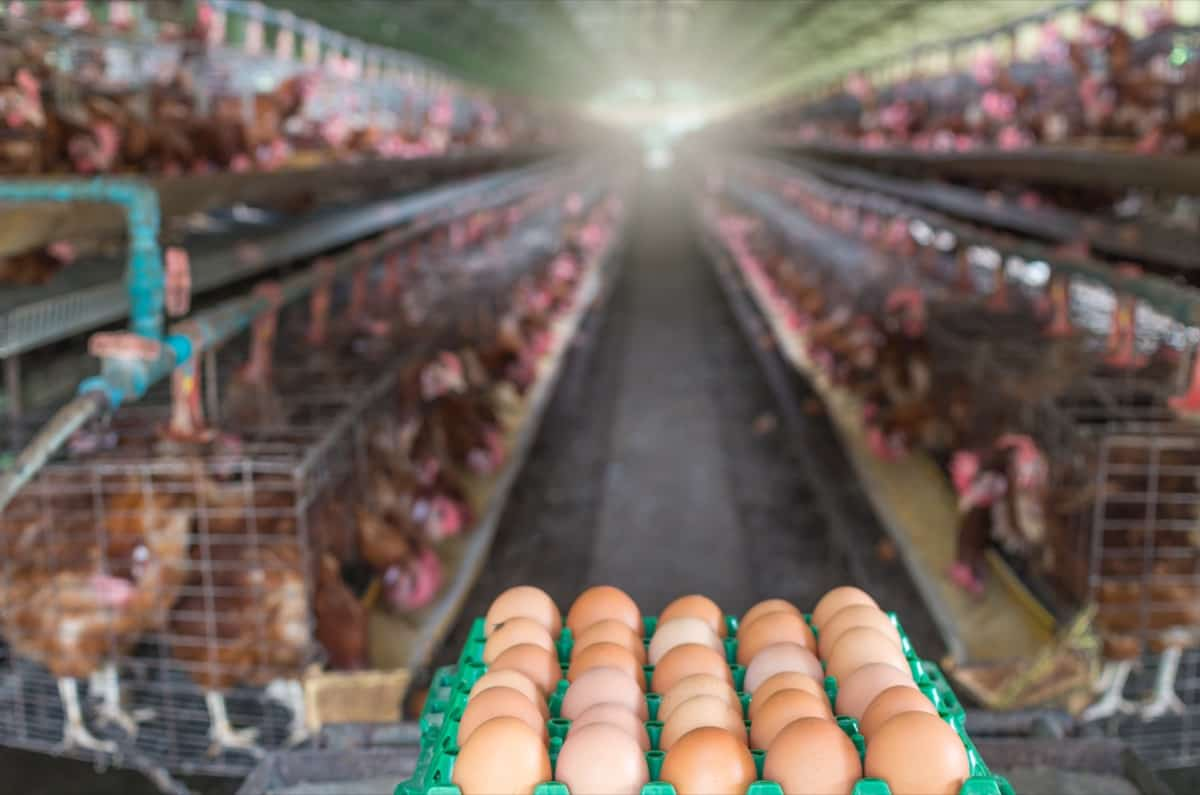
Optimal Nutrition for Maximizing Egg Production in Chickens
- Balanced Diet: Provide a well-balanced diet that meets the nutritional requirements of laying hens, including essential vitamins, minerals, protein, and carbohydrates.
- Protein Content: Ensure a sufficient protein intake, typically around 16-18% of the diet, to support egg development and production.
- Calcium Supplementation: Offer a calcium-rich diet or provide oyster shell grit separately to meet the high calcium demands for strong eggshell formation.
- Omega-3 Fatty Acids: Incorporate omega-3 fatty acids into the diet to enhance egg quality and increase the nutritional value for consumers.
- Vitamin D: Ensure adequate vitamin D levels through exposure to natural sunlight or provide supplemental forms to support calcium absorption.
- Hydration: Ensure access to clean and fresh water, as water is vital for egg production and overall health.
- Limiting Stress Factors: Minimize stressors such as sudden changes in diet, temperature fluctuations, and overcrowding, as they can negatively impact egg production.
- Regular Feed Evaluation: Evaluate feed quality to ensure optimal nutrient content and freshness.
Effective Lighting Techniques to Increase Egg Production in Poultry
Implementing these effective lighting techniques on poultry farms can help optimize egg production by providing the right conditions for hens to lay eggs consistently and efficiently.
- Day Length Manipulation: Manipulating the length of daylight hours can stimulate egg production in poultry. Using artificial lighting to provide longer days during the winter months can help maintain consistent egg production.
- Optimal Light Intensity: Adequate light intensity is crucial for encouraging hens to lay eggs. Providing at least 20-30 lux of light intensity in the hen house ensures proper stimulation for egg production.
- Lighting Schedule: A consistent lighting schedule helps regulate the hens’ biological rhythms and encourages them to lay eggs at specific times. It is typical to recommend a 16-hour light period and an 8-hour dark period.
- Gradual Lighting Changes: When adjusting lighting schedules, it’s important to gradually change over a few days to minimize stress and disrupt the hens’ routine.
- Red Light Stimulation: Red light can be used during the dark period to reduce cannibalism and promote calmness among the flock, leading to better egg production.
- Light Distribution: Ensuring uniform light distribution throughout the hen house helps prevent shadowed areas that may discourage hens from laying in certain spots.
Managing Egg-Laying Cycles in Chickens for Maximum Productivity
- Provide consistent lighting: Maintaining a regular and appropriate lighting schedule is crucial for egg-laying cycles. Provide 14-16 hours of light per day to stimulate egg production.
- Monitor temperature and humidity: Ensure that the coop’s temperature remains between 60-75°F (15-24°C) for optimal egg production. Proper ventilation and humidity control (40-70%) are essential to avoid stress and encourage consistent laying.
- Balanced nutrition: A well-balanced diet rich in protein, calcium, and other essential nutrients is vital for optimal egg production. Feed specially formulated layer feeds containing around 16-18% protein.
- Calcium supplementation: Supplying calcium-rich sources like oyster shells or crushed eggshells is crucial for strong eggshells. Hens need sufficient calcium for shell formation.
- Nesting boxes: Provide clean, comfortable, darkened boxes to encourage hens to lay eggs in a suitable environment.
- Disease prevention: Implement biosecurity measures to prevent diseases disrupting egg-laying cycles. Vaccinate against common poultry diseases and maintain good hygiene practices.
- Regular health checks: Monitor the overall health of your chickens regularly, looking out for signs of illness or stress that may affect egg production.
- Minimize stress factors: Avoid sudden changes in the coop environment, handle hens gently, and provide them with adequate space, perches, and dust-bathing areas.
- Molting management: Be aware of the molting process, where hens shed and regrow feathers. During this time, egg production decreases. Adjust management practices accordingly.
- Record-keeping: Maintain detailed records of egg production, health issues, feed consumption, and any changes made. This data will help you identify trends and make informed management decisions.
In case you missed it: How to Start Country Chicken Farming from Scratch in Andhra Pradesh: A Step-By-Step Guide for Beginners
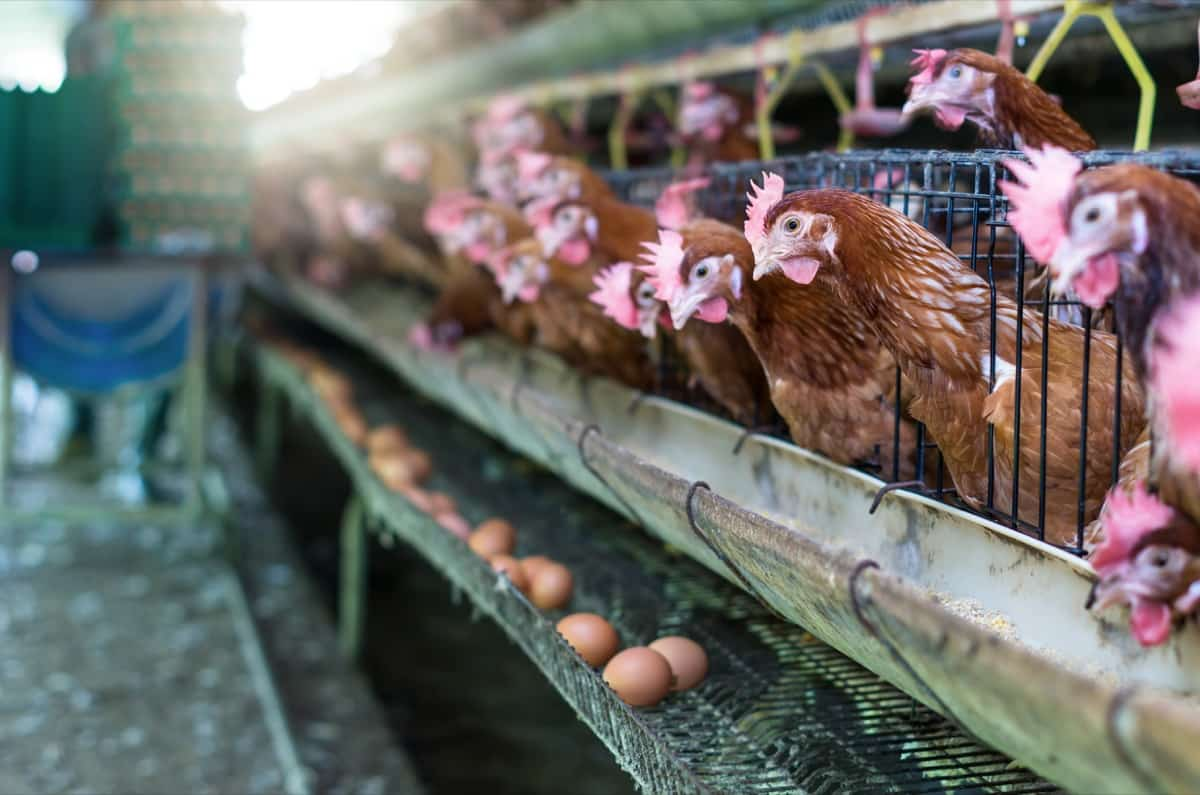
Importance of Proper Ventilation in Maximizing Egg Production
- Temperature regulation: Adequate ventilation helps regulate the temperature inside the chicken coop. During hot weather, proper airflow prevents overheating, while in colder conditions, ventilation prevents excessive humidity and condensation, which can lead to respiratory issues.
- Fresh air supply: Ventilation ensures a constant supply of fresh air, reducing the buildup of ammonia, dust, and other airborne particles that can negatively impact hen health and egg production.
- Moisture control: Good ventilation helps control moisture levels by removing excess humidity and reducing the coop’s dampness risk. High humidity can cause stress and respiratory problems, potentially leading to decreased egg production.
- Odor management: Efficient ventilation helps dissipate odors associated with chicken waste, maintaining a more pleasant environment for both the hens and the farmers.
- Disease prevention: Proper airflow helps minimize the spread of airborne pathogens and reduces the risk of respiratory diseases among the flock, which can impact egg-laying productivity.
- Ammonia reduction: Ventilation systems help remove ammonia, a byproduct of chicken waste, which can irritate the respiratory system and affect egg quality and production.
Implementing a Consistent Egg Collection Routine for Increased Productivity
- Set a Regular Collection Schedule: Establish a consistent daily egg collection routine. This ensures that eggs are collected promptly, reducing the risk of breakages, spoilage, or hens deciding to nest elsewhere.
- Check Nesting Boxes Frequently: Monitor the nesting boxes to encourage birds to lay eggs in designated areas. Remove debris, ensure clean and comfortable nesting materials, and provide a dimly lit, quiet environment.
- Handle Eggs with Care: When collecting eggs, handle them gently to prevent cracking or damage. Avoid shaking or dropping them, affecting their quality and market value.
- Clean and Sanitize Eggs: If any eggs are dirty, gently wipe them clean with a dry cloth. However, avoid washing eggs with water, as it can remove the natural protective coating and increase the risk of bacterial contamination.
- Store Eggs Properly: Place collected eggs in a clean and well-ventilated storage area with a consistent temperature between 45-55°F (7-13°C). Use an egg carton or tray to keep them upright and prevent rolling, affecting their quality.
- Regularly Inspect Eggs for Quality: Conduct regular quality checks on collected eggs. Discard any eggs with cracks, unusual odors, or signs of spoilage. This ensures that only high-quality eggs reach the market.
- Maintain Records: Keep detailed records of egg production, including the number of eggs collected, their quality, and any observations. This data will help identify trends, address issues promptly, and make informed decisions to improve productivity.
- Train Staff on Collection Procedures: Train farm staff on egg collection procedures, emphasizing the importance of careful handling and following the established routine. Consistency and attention to detail are key to maximizing productivity.
In case you missed it: Top 16 Steps to Boost Chickpea/Bengal Gram Yield: How to Increase Production, Quality, and Tips
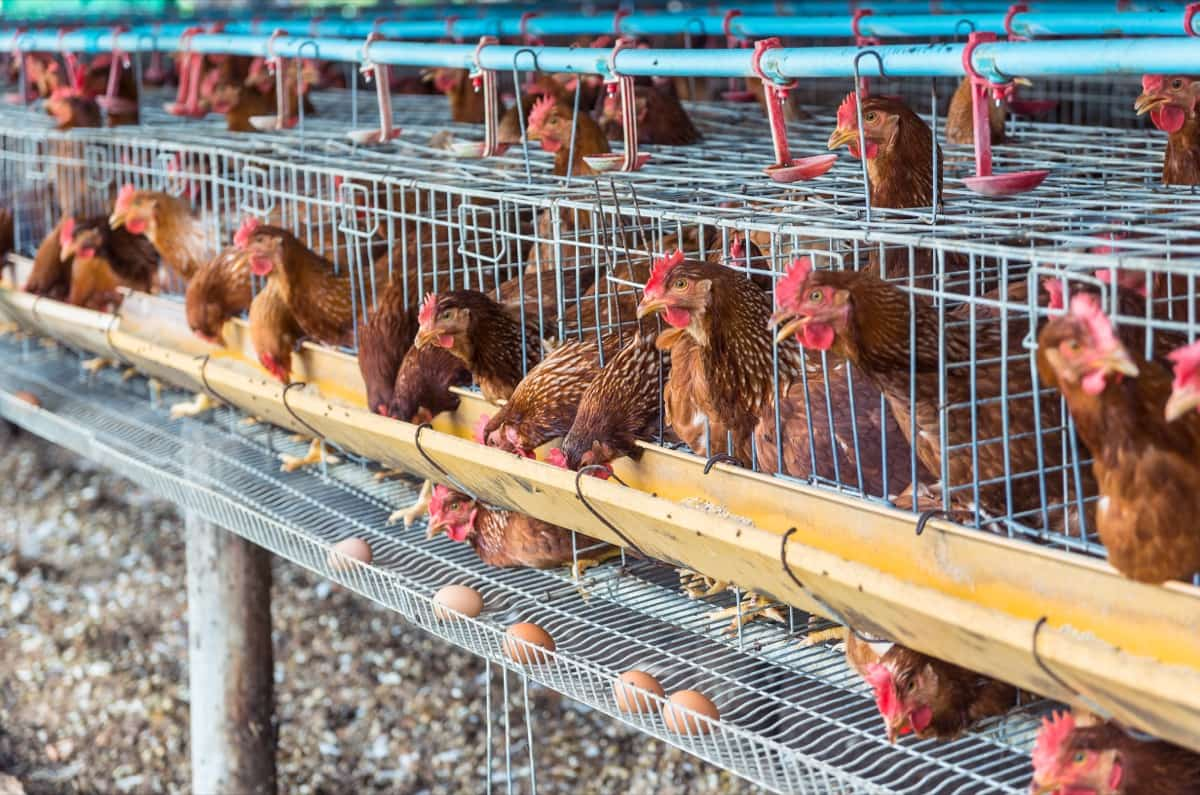
Strategies for Preventing and Managing Diseases That Affect Egg Production
- Implement strict biosecurity protocols, including limiting visitor access, disinfection practices, and controlling movement.
- Follow recommended vaccination schedules and consult with a veterinarian for appropriate vaccines.
- Maintain a clean and hygienic environment through regular cleaning, disinfection, waste management, and bedding removal.
- Control pests such as rodents, flies, and mites to minimize disease transmission.
- Isolate and monitor new flock additions to prevent disease introduction.
| Disease | Impact on Egg Production |
| Infectious Bronchitis | Decreased egg production and poor egg quality |
| Newcastle Disease | Drop in egg production and increased mortality |
| Avian Influenza | Respiratory signs, decreased egg production, high mortality |
| Infectious Bursal Disease | Immunosuppression, decreased egg production |
| Coccidiosis | Diarrhea, decreased feed intake, reduced egg production |
| Salmonellosis | Decreased egg quality, potential health risks for consumers |
The Role of Calcium Supplementation in Improving Egg Quality and Quantity
- Calcium and Eggshell Formation: Calcium is vital to producing strong and healthy eggshells. Hens need sufficient calcium to form the shell and maintain their skeletal health.
- Enhanced Eggshell Strength: Calcium supplementation in the diet of laying hens improves eggshell quality, making it thicker and more resistant to cracking or breaking during the laying process.
- Preventing Calcium Deficiency: Insufficient calcium intake can lead to calcium deficiency in hens, resulting in weak or thin eggshells. Supplementing their diet with calcium ensures they have an adequate supply to meet their needs.
- Improved Egg Production: A calcium-rich diet for laying hens promotes regular and consistent egg production. Calcium supplementation is crucial in maintaining the flock’s reproductive health and egg-laying performance.
- Overall Nutritional Balance: Calcium supplementation should be combined with a balanced diet with other essential nutrients to support optimal egg quality and quantity. Proper nutrition ensures the overall health and productivity of the hens.
Innovative Technologies for Monitoring and Optimizing Egg Production in Chicken Farms
- Automated Egg Collection Systems: Advanced technology allows for the automation of egg collection, reducing labor costs and minimizing the risk of damage or contamination to the eggs. These systems can efficiently sort, grade, and package eggs for commercial sale.
- Remote Monitoring and Sensor Systems: Wireless sensors and monitoring devices can be installed in chicken coops to track and analyze parameters such as temperature, humidity, ventilation, and lighting. Real-time data collection enables farmers to optimize the environment for maximum egg production and ensure the flock’s well-being.
- Egg Quality Analysis: Cutting-edge imaging technology and computer vision systems can accurately assess egg quality attributes, including shell integrity, size, and color. These systems help identify abnormalities or defects, allowing farmers to take corrective measures.
- Data Analytics and Artificial Intelligence: Farmers can gain valuable insights into factors influencing egg production by leveraging data analytics and artificial intelligence.
- Genetic Selection and Breeding Programs: Advanced genetic selection techniques enable the breeding of chickens with superior egg-laying traits. Through genomic analysis and selective breeding, farmers can develop strains of chickens that exhibit increased egg production, enhanced egg quality, and improved disease resistance.
In case you missed it: How this Farmer Made 24 Lakh Profit from Country Chicken Farming – A Success Story
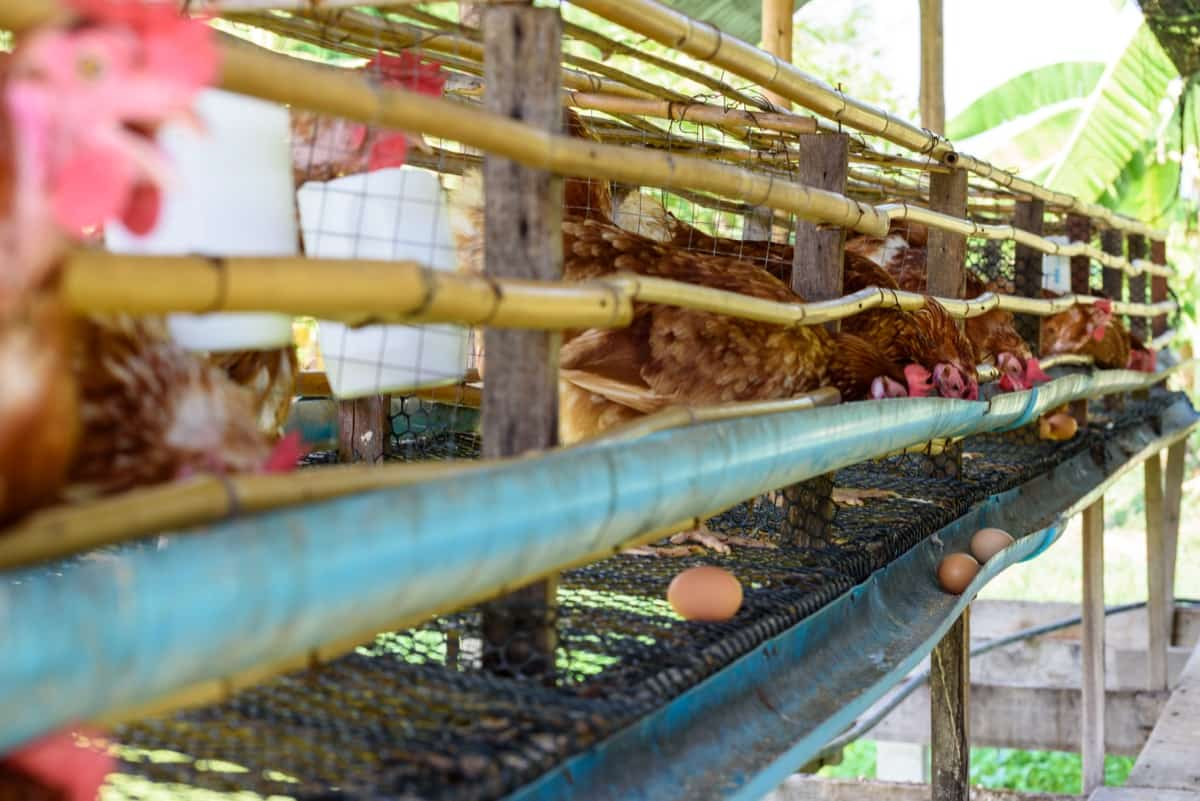
Conclusion
Implementing effective strategies such as choosing the right breeds, optimizing nutrition, managing egg-laying cycles, ensuring proper ventilation, and adopting innovative technologies are key to maximizing egg production and boosting productivity in your chicken farm.
- Types of Pesticides Used in Agriculture: A Beginner’s Guide
- Economical Aquaculture: A Guide to Low-Budget Fish Farming
- 15 Common Planting Errors That Can Doom Your Fruit Trees
- How to Make Houseplants Bushy: Effective Tips and Ideas
- Innovative Strategies for Boosting Coconut Pollination and Yield
- Pollination Strategies for Maximum Pumpkin Yield
- The Complete Guide to Chicken Fattening: Strategies for Maximum Growth
- Natural Solutions for Tulip Problems: 100% Effective Remedies for Leaf and Bulb-Related Issues
- Revolutionizing Citrus Preservation: Towards a Healthier, Greener Future
- Natural Solutions for Peony Leaf and Flower Problems: 100% Effective Remedies
- Maximizing Profits with Avocado Contract Farming in India: A Comprehensive Guide
- Natural Solutions for Hydrangea Problems: 100% Effective Remedies for Leaf and Flowers
- The Ultimate Guide to Choosing the Perfect Foliage Friend: Bringing Life Indoors
- From Sunlight to Sustainability: 15 Ways to Use Solar Technology in Agriculture
- The Ultimate Guide to Dong Tao Chicken: Exploring from History to Raising
- The Eco-Friendly Makeover: How to Convert Your Unused Swimming Pool into a Fish Pond
- Mastering the Art of Delaware Chicken Farming: Essentials for Healthy Backyard Flocks
- 20 Best Homemade Fertilizers for Money Plant: DIY Recipes and Application Methods
- How to Craft a Comprehensive Free-Range Chicken Farming Business Plan
- Brighten Your Flock: Raising Easter Egger Chickens for Beauty and Bounty
- How to Optimize Your Poultry Egg Farm Business Plan with These Strategies
- Subsidy for Spirulina Cultivation: How Indian Government Schemes Encouraging Spirulina Farmers
- Ultimate Guide to Raising Dominique Chickens: Breeding, Feeding, Egg-Production, and Care
- Mastering the Art of Raising Jersey Giant Chickens: Care, Feeding, and More
- Ultimate Guide to Raising Legbar Chickens: Breeding, Farming Practices, Diet, Egg-Production
- How to Raise Welsummer Chickens: A Comprehensive Guide for Beginners
- How to Protect Indoor Plants in Winter: A Comprehensive Guide
- Ultimate Guide to Grow Bag Gardening: Tips, Tricks, and Planting Ideas for Urban Gardeners
- Guide to Lotus Cultivation: How to Propagate, Plant, Grow, Care, Cost, and Profit
- Agriculture Drone Subsidy Scheme: Government Kisan Subsidy, License, and How to Apply Online
- Ultimate Guide to Raising Araucana Chickens: Breed Profile, Farming Economics, Diet, and Care
- Bringing Hydroponics to Classroom: Importance, Benefits of Learning for School Students
- Ultimate Guide to Raising Polish Chickens: Breed Profile, Farming Economics, Diet, and Care
- Ultimate Guide to Raising Australorp Chickens: Profile, Farming Economics, Egg Production, Diet, and Care
- Silkie Chicken Farming: Raising Practices, Varieties, Egg Production, Diet, and Care
- Sussex Chicken Farming: Raising Practices, Varieties, Egg Production, Diet and Care